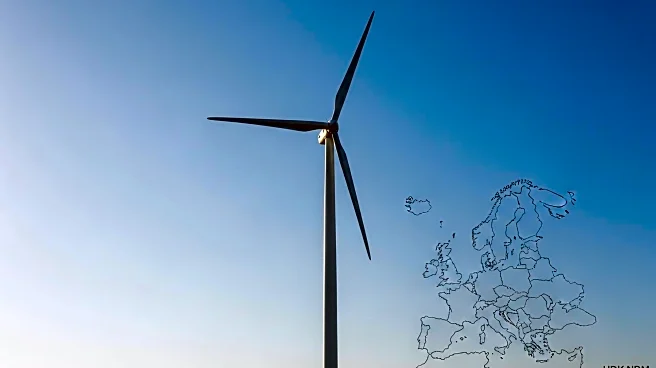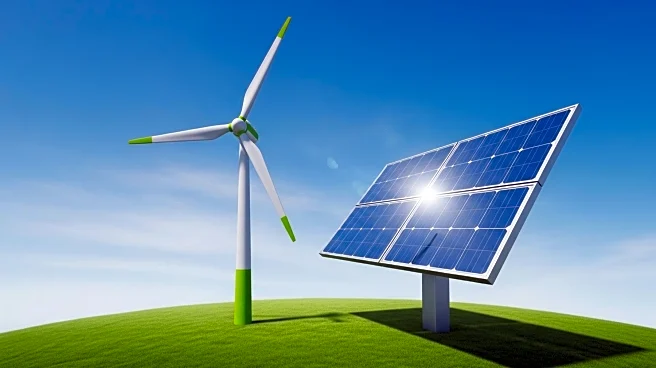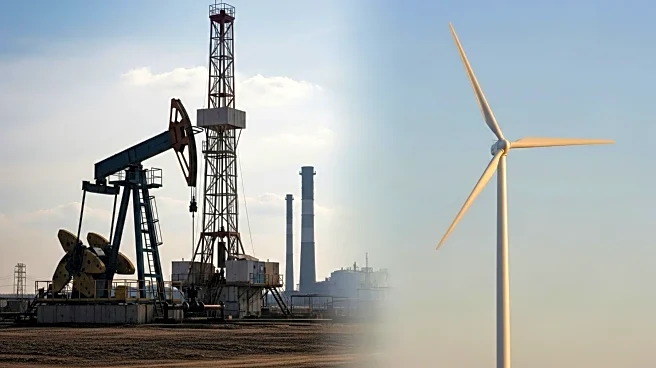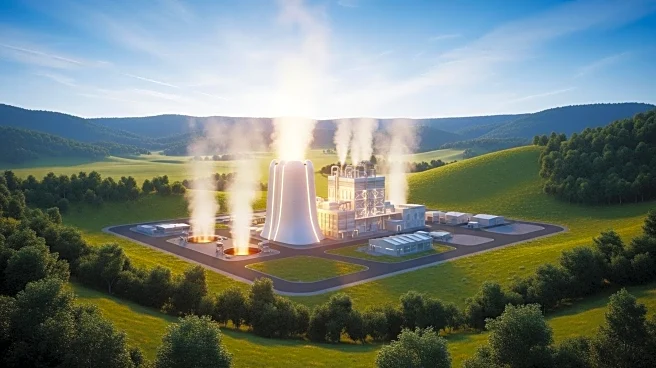What's Happening?
The International Renewable Energy Agency (IRENA) has projected that renewable energy sources will account for 91% of global electricity by 2050. This forecast is primarily driven by solar photovoltaics and wind energy. Despite the record addition of approximately 582 gigawatts of new renewable power capacity in 2024, IRENA emphasizes that achieving the global target of 11.2 terawatts of renewables capacity by 2030 requires addressing significant infrastructure gaps. The agency identifies inefficiencies in power grids and lagging infrastructure development as major challenges to meeting electricity demand and energy transition goals. IRENA estimates that around $670 billion of investment is needed annually between 2025 and 2030 to strengthen electricity grids. Additionally, domestic permitting processes and supply chain constraints are cited as barriers to the establishment of new transmission lines.
Why It's Important?
The transition to renewable energy is crucial for reducing carbon emissions and combating climate change. IRENA's projection underscores the importance of large-scale renewable projects and the need for robust infrastructure to support this transition. The anticipated investment in electricity grids highlights the economic opportunities and challenges associated with the energy shift. Addressing infrastructure and supply chain issues is vital for both developed and developing economies to meet their energy needs sustainably. The focus on market reforms, workforce upskilling, and de-risking investment reflects the broader economic and policy implications of the renewable energy transition.
What's Next?
To achieve the projected renewable energy targets, significant efforts are required to overcome existing barriers. This includes reforming market structures, enhancing workforce skills, and expanding global manufacturing capabilities. Policymakers and industry leaders will need to collaborate to streamline permitting processes and address supply chain constraints. The success of these initiatives will determine the pace and effectiveness of the global energy transition, impacting economic growth and environmental sustainability.










